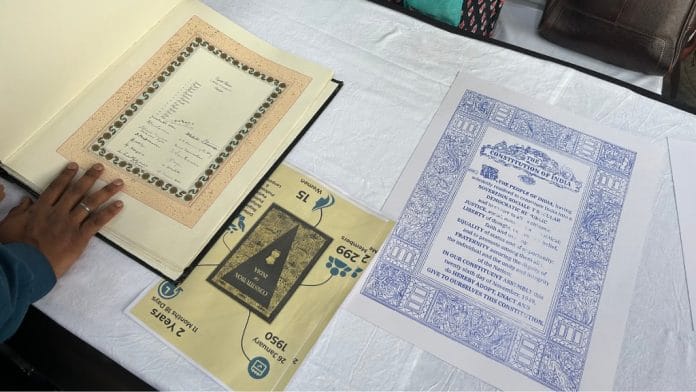Thank you dear subscribers, we are overwhelmed with your response.
Your Turn is a unique section from ThePrint featuring points of view from its subscribers. If you are a subscriber, have a point of view, please send it to us. If not, do subscribe here: https://theprint.in/subscribe/
The 25th Constitution (Amendment) Act of 1971 inserted Article 31-C with the aim to further the socialist directive principles enshrined in Article 39(b) and Article 39(c) under Part – IV of the Constitution. Article 31-C stipulates that any legislation enacted to give effect to equitable distribution of a community’s material resources to subserve the common good and prevent the concentration of wealth in the hands of a few shall not be declared void on the grounds of it being inconsistent with, or takes away, or abridges any of the fundamental rights guaranteed by Article 14 and Article 19 under Part-III of the Constitution.
This Article further provided that no such legislation shall be called in question in a court of law, thus barricading the impugned legislation from the court’s judicial review. However, on 24th April, 1973, the Hon’ble Apex Court in the landmark judgment of Kesavananda Bharati Sripadagalvaru And Ors. vs. State of Kerala And Anr. struck down this second provision as being unconstitutional, violative of the doctrine of basic structure of the Constitution and ousting the power of the judiciary in reviewing legislations.
Furthermore, by the 42nd Constitution (Amendment) Act of 1976, this Article was amended to extend the ambit of saving to all the directive principles laid down in Part-IV which was struck down in another landmark judgment of the Apex Court in the case of Minerva Mills vs. Union of India as the impugned clauses (4) and (5) of the Article aimed to supplant the directive principles over and above the fundamental rights. Although this judicial pronouncement drew strict boundaries within which the Parliament was empowered to amend the Constitution, queries regarding the doctrine of automatic revival and the validity and applicability of Article 31-C remained unresolved. On one hand, it was argued that since the expanded version of the Article was struck down in the aforementioned case, the original could not revive automatically. This argument was founded on the legal principle that once replaced, the original provision ceases to exist unless explicitly reinstated. On the other hand, it was argued that the original Article 31-C shall automatically revive based on the doctrine of revival, founded on similar previous precedents like the NJAC judgement.
The question was finally put to rest in the recent landmark judicial pronouncement by a nine-judge bench of the Apex Court in Property Owners Assn. v. State of Maharashtra which fortified this doctrine thereby reaffirming the latter argument. The provisions of the Maharashtra Housing and Area Development Act, 1976 were challenged as being in violation of Articles 14 and 19 wherein it was argued that they were enacted to further socialist principles enshrined under Article 39(b) and was thereby protected under Article 31-C. By upholding the doctrine of revival, this judgement by the Apex Court has twin implications – India’s constitutional framework and the Parliament’s legislative powers – with profound implications and far-reaching consequences on India’s social welfare policy. With this ruling, the Apex Court has ensured that striking down amendments do not create a legal vacuum, thereby highlighting that legislative intent is composite and allowing it to uphold repeals if substantial evidence exists and suggests that the legislature intended them independently. Henceforth, this judicial pronouncement upholds constitutional continuity and clarity for future judicial interpretations and legislative limitations.
These pieces are being published as they have been received – they have not been edited/fact-checked by ThePrint


